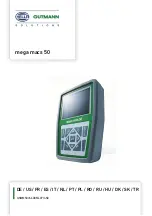
Programming your PC1
Using the Arpeggiator
4-22
Using the Arpeggiator
The arpeggiator takes input from PC1’s keyboard (or via MIDI) and turns it into a constant
rhythmic pattern. You can control the speed and nature of the pattern in real time. The
arpeggiator resembles what were called “sequencers” on old analog synths—playing a finite
series of notes repeatedly, with changes in the series controlled by the notes you play. The
arpeggiator can affect both the PC1 and any MIDI instruments that are slaves of the PC1. The
notes produced by the arpeggiator in a given setup zone go to all of that zone’s destinations:
local, MIDI, or both.
The concept behind the PC1’s arpeggiator is fairly simple, although the options are extensive.
Think of it as a “note processor,” generating complex output from relatively modest input. You
can select any number of notes for the input, and tell the arpeggiator to recognize and remember
them. This is called “latching” the notes. The arpeggiator then processes them by playing them
repeatedly, and/or transposing them up and down. You have control over several processing
parameters: tempo, velocity, order, duration, transposition, and whether the intervals between
notes are filled chromatically. You can also tell the arpeggiator how to deal with new information
coming from the keyboard. The settings you define in the Arpeggiator menu apply to all zones
for which arpeggiation is activated; you can program each zone individually to respond to or
ignore the setup’s arpeggiation values. Figure 4-1 shows the processing order the PC1 uses to
create arpeggios from your input:
Figure 4-1 Arpeggiator Processing Sequence
Many of the PC1’s factory setups make use of the arpeggiator—for example, those that include
notes in the setup’s name, like setup
001 Dance C7
. There are others as well; you’ll know them
when you find them.
The PC1’s arpeggiator can be a lot of fun to play with; you can get many interesting and unusual
effects. The following tutorial will get you started.
1.
Start in Setup mode. To best hear the effects of the arpeggiator, you might want to start
with a program that has a percussive attack, such as piano, marimba, or guitar. Select a
program you like, then mute the other zones in the setup.
2.
Press
Edit
, then find the Arpeggiator menu and press
Enter
.
3.
The Arp Active parameter appears. Set its value to
On
, if it isn’t there already. Play a
chord on the keyboard, and hold it on. You should hear arpeggiated notes. If you hear
nothing at all, go to the Global menu and check to make sure the Clock parameter is set
to
Internal
. If you hear notes but they aren’t arpeggiated, go back to the Arpeggiator
menu (if you’ve left it), find the Zone Enable parameter, and make sure its value is
On
.
Find the Latch Mode parameter and make sure its value is
Keys
.
















































